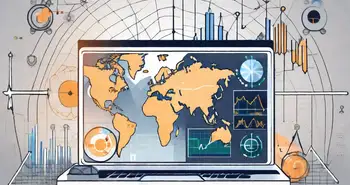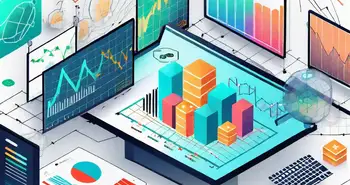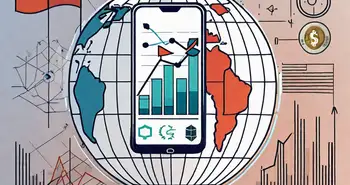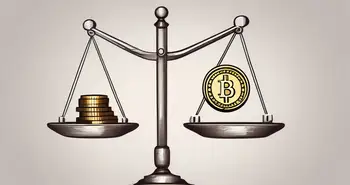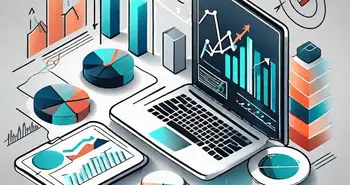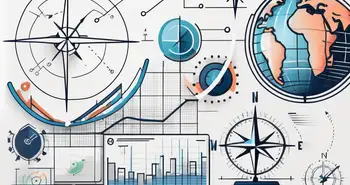The Ultimate Guide to Internet Trading

Welcome to the ultimate guide to internet trading, where I will take you through everything you need to know to become a savvy online trader. Whether you're a beginner or have some experience in traditional trading, this guide will equip you with the knowledge and skills to navigate the exciting world of internet trading.
Understanding the Basics of Internet Trading
Before we dive into the intricacies of internet trading, let's first define what it actually means. Internet trading, also known as online trading, refers to the buying and selling of financial instruments such as stocks, currencies, commodities, and cryptocurrencies through internet-based platforms.
The evolution of online trading has revolutionized the way we trade. Gone are the days when you had to rely on a traditional brick-and-mortar brokerage firm to execute your trades. With internet trading, you have direct access to global markets and can make trades from the comfort of your own home.
Imagine waking up in the morning, grabbing a cup of coffee, and logging into your online trading account. Within seconds, you can access real-time market data, analyze charts, and execute trades with just a few clicks. The convenience and accessibility of internet trading have opened up a world of opportunities for both seasoned traders and beginners alike.
As you delve into internet trading, you'll come across several key terms and concepts. It's essential to familiarize yourself with these to navigate the trading world effectively. Terms such as order types, leverage, margin, and stop-loss are just a few examples of the jargon you'll encounter.
Order types are instructions you give to your broker on how you want your trades to be executed. Market orders, limit orders, and stop orders are some of the commonly used order types. Understanding when and how to use each order type can greatly impact your trading strategy.
Leverage is another crucial concept in internet trading. It allows you to control a larger position with a smaller amount of capital. While leverage can amplify your profits, it also increases your risk. It's important to use leverage wisely and understand the potential consequences.
Margin is closely related to leverage. It refers to the amount of money you need to deposit with your broker to open and maintain a leveraged position. Margin requirements vary depending on the financial instrument and the broker you choose. It's crucial to understand margin requirements and manage your account accordingly to avoid margin calls.
Stop-loss is a risk management tool used by traders to limit their potential losses. It's an order placed with your broker to automatically sell a security when it reaches a certain price. Stop-loss orders can help protect your capital and prevent significant losses in volatile markets.
Internet trading platforms offer a wide range of features and tools to assist traders in their decision-making process. From advanced charting tools to technical indicators and news feeds, these platforms provide the necessary resources to analyze the markets and make informed trading decisions.
Moreover, internet trading has also given rise to social trading networks, where traders can connect, share ideas, and even copy the trades of successful traders. This collaborative approach to trading has made it easier for beginners to learn from experienced traders and potentially improve their trading performance.
In conclusion, internet trading has transformed the way we participate in financial markets. It has democratized trading, making it accessible to anyone with an internet connection. However, it's important to approach internet trading with caution and educate yourself on the various aspects of trading to increase your chances of success.
Setting Up Your Trading Account
Now that you understand the basics, it's time to set up your trading account. The first step is choosing the right trading platform. Look for one that offers a user-friendly interface, robust security measures, and a wide range of trading instruments. Take your time to compare different platforms and find the one that aligns with your trading goals and preferences.
When selecting a trading platform, it's important to consider the level of customer support they provide. A platform that offers 24/7 customer service can be invaluable, especially if you encounter any issues or have questions while trading. Look for platforms that offer multiple channels of communication, such as live chat, phone support, and email.
Once you've selected a platform, you'll need to open an online trading account. This typically involves providing personal information, verifying your identity, and agreeing to the platform's terms and conditions. Make sure to read and understand all the documentation before proceeding.
During the account opening process, you may be required to provide proof of address and proof of identity. This can include documents such as utility bills, bank statements, and government-issued identification. It's important to have these documents readily available to ensure a smooth account opening process.
Understanding the features of your trading account is crucial for successful trading. Familiarize yourself with features such as real-time market data, charting tools, order execution options, and risk management tools. Real-time market data allows you to stay updated on the latest market trends and make informed trading decisions.
Charting tools are essential for technical analysis, as they help you identify patterns and trends in price movements. These tools often include various indicators and drawing tools that can assist you in analyzing market data and making predictions.
Order execution options determine how your trades are executed. Different platforms offer different types of orders, such as market orders, limit orders, and stop orders. Understanding these options and how they work can help you execute trades more effectively.
Risk management tools are designed to help you manage and mitigate potential risks associated with trading. These tools can include features such as stop-loss orders, which automatically close your position if the market moves against you, and take-profit orders, which automatically close your position when a certain profit target is reached.
Being comfortable with these features will greatly enhance your trading experience. Take the time to explore and familiarize yourself with the platform's interface and functionalities. Practice using the different tools and features in a demo account before trading with real money.
Remember, setting up your trading account is just the beginning. Continuous learning and improvement are essential for long-term success in trading. Stay updated on market news, economic events, and trading strategies to enhance your knowledge and skills.
Exploring Different Types of Internet Trading
Internet trading offers a plethora of options when it comes to the types of financial instruments you can trade. Let's take a closer look at some of the most popular types:
Forex Trading
Forex trading involves buying and selling currencies in the foreign exchange market. It's the largest and most liquid market globally, offering plenty of opportunities for traders. Understanding currency pairs, economic indicators, and geopolitical events is essential in forex trading.
Stock Trading
Stock trading involves buying and selling shares of publicly listed companies. It's an exciting market that offers a chance to invest in well-established companies or emerging startups. Staying informed about company financials, industry trends, and market news is crucial for successful stock trading.
Cryptocurrency Trading
Cryptocurrency trading involves buying and selling digital currencies such as Bitcoin, Ethereum, and Ripple. This market operates 24/7, providing ample opportunities for traders. Keeping up with blockchain technology advancements and understanding market sentiment is vital in cryptocurrency trading.
Commodity Trading
Commodity trading involves buying and selling physical or virtual goods such as gold, oil, agricultural products, and more. Understanding supply and demand dynamics, geopolitical factors, and global market trends play a significant role in successful commodity trading.
Developing a Successful Trading Strategy
Now that you have a solid understanding of the different types of internet trading, it's time to develop a successful trading strategy. Two primary methods used by traders are fundamental analysis and technical analysis.
Fundamental analysis involves assessing the intrinsic value of an asset by analyzing economic indicators, company financials, and market trends. Technical analysis, on the other hand, focuses on analyzing price patterns, chart formations, and market data to predict future price movements.
Risk management is paramount in trading. Establishing a consistent strategy that includes setting stop-loss orders, managing leverage, and diversifying your portfolio is essential to protect your capital and minimize losses.
Personal Advice: Aiming for Consistent Growth
Throughout my years of experience in internet trading, I've learned that aiming for consistent growth is key. It's essential to set realistic goals, study the market diligently, and continuously refine your trading strategy. Patience and discipline are crucial attributes for long-term success. Remember, trading is not a get-rich-quick scheme; it requires dedication, continuous learning, and the ability to adapt to changing market conditions.
FAQ (Frequently Asked Questions)
What is internet trading?
Internet trading refers to buying and selling financial instruments through internet-based platforms, giving traders direct access to global markets.
How do I set up a trading account?
To set up a trading account, choose a suitable trading platform, open an online trading account by providing personal details and complying with the platform's requirements, and familiarize yourself with the account features.
What are the different types of internet trading?
The different types of internet trading include forex trading, stock trading, cryptocurrency trading, and commodity trading, each with its own characteristics and factors to consider.
What is fundamental analysis, and what is technical analysis?
Fundamental analysis involves assessing an asset's intrinsic value based on economic indicators and company financials, while technical analysis involves studying price patterns and chart formations to predict price movements.
How important is risk management in trading?
Risk management is paramount in trading as it protects capital and minimizes losses. Stop-loss orders, leverage management, and portfolio diversification are essential risk management techniques.
What is the key to long-term success in internet trading?
The key to long-term success in internet trading is aiming for consistent growth, setting realistic goals, diligently studying the market, and continuously refining your trading strategy. Patience, discipline, and adaptation are also crucial.
With the knowledge and insights gained from this ultimate guide, you are now equipped to embark on your internet trading journey confidently. Remember to practice, stay informed, and keep honing your skills. Happy trading!

Disclaimer: All investments involve risk, and the past performance of a security, industry, sector, market, financial product, trading strategy, or individual’s trading does not guarantee future results or returns. Investors are fully responsible for any investment decisions they make. Such decisions should be based solely on an evaluation of their financial circumstances, investment objectives, risk tolerance, and liquidity needs. This post does not constitute investment advice.

Painless trading for everyone
Hundreds of markets all in one place - Apple, Bitcoin, Gold, Watches, NFTs, Sneakers and so much more.

Painless trading for everyone
Hundreds of markets all in one place - Apple, Bitcoin, Gold, Watches, NFTs, Sneakers and so much more.

